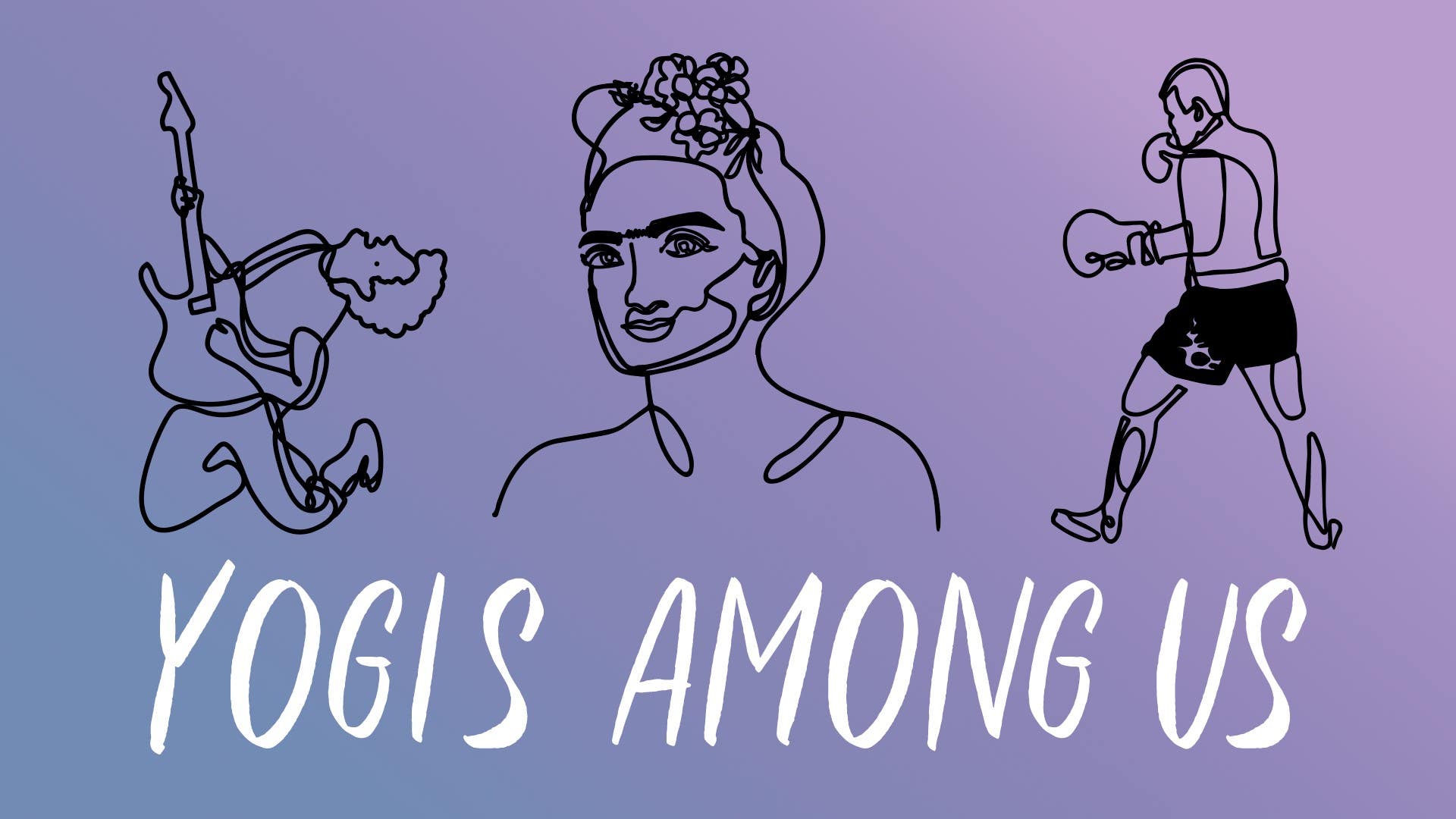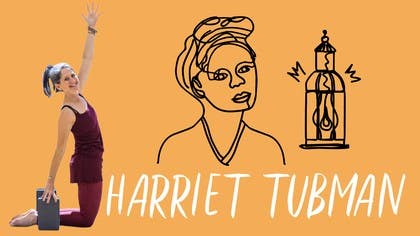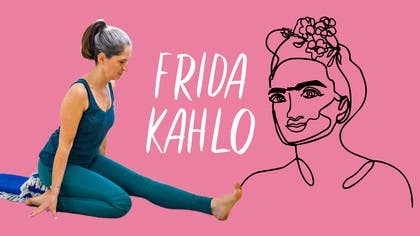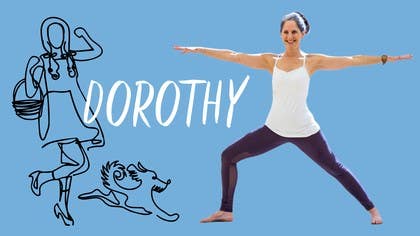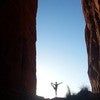Description
About This Video
Transcript
Read Full Transcript
Chapter 1
Talk
There's a 1945 painting called Seeds of Creation by Frida Kahlo. It features at the center a fetus in utero about to be born, head down, front and center. It's big relative to the rest of the images in the painting. Just underneath it is baby Moses in his basket floating down the river. On either side are images that we assume are sperm and egg, pretty significant.
And then above is a huge bright orange ball of sun fire with arms reaching out in all directions, hands at the end. And at the end of each hand are smaller images on each side of likenesses of real people. Remember this is 1945, so Mussolini is there, Hitler is there, Gandhi is there, there are ancient Greek and Roman and Chinese gods and goddesses. There are flags of all the nation, there's a riot of color, it's full of life. And yet there are also these symbols of death and war.
This was Frida Kahlo's life. She lived on the brink of death almost her entire life and yet she lived this life so fully and so colorfully and so vibrantly in spite of all of her physical challenges. She was stricken with polio as a young child and it impaired mobility in one of her legs for her whole life. And then that would have been enough, but when she was a teenager, age 18, she was riding home from school in a bus that collided with a trolley. Frida is thrown from the bus, she lands with a metal pole that spikes her pelvis, she breaks her spine, she breaks her foot, she has injuries all over her body, she's placed in a plaster cast that envelops her entire torso and has to go through 30 surgeries throughout her life as a result of this accident.
So she's no stranger to the prospect of death and no stranger to the pain of life. In the Bhagavad Gita we get this lesson loud and clear from Krishna that says you were never born and you will never die. The you that you're not seeing, he's speaking to his young protege Arjuna, the you that you're not seeing is the pervasive you, the pervasive sense of divine conscious presence that lives inside of us all regardless of the circumstances of life or death. That spirit is always present and always available and always alive and real for us. Frida had this relationship with death and we believe as a result of her physical challenges and all of these misfortunes that spoke to this lesson so clearly.
Another painting is called The Suicide of Dorothy Hale. So Dorothy Hale was a famous journalist who jumped from a window after she had thrown herself a party. She lands on the sidewalk and Claire Booth Loose of the famous family asks Frida Kahlo commissions her to do a painting in honor of Dorothy Hale as a gift of condolence to Dorothy's mother. So Frida paints this beautiful ethereal sky, bright blue puffy white clouds and she paints the image of Dorothy Hale lying on the sidewalk in a puddle of blood. However, Dorothy herself is bathed in beauty.
You can see the the creases on her dress and the beautiful jeweled brooch on her chest and the image on her face is fairly serene and you have this juxtaposition of the violent fall from the window and this sad wish that she had to end her life with so much beauty surrounding it. Frida's relationship with death was not a scary one. It wasn't a dark fearful fear-based clinging relationship. It was a recognition that this is a real part of life and that the lines between life and death are tenuous and flimsy and not necessarily ones to be feared. We get this same lesson in the yoga sutras outlines the five root causes of suffering and the fifth one is in Sanskrit Abhinavasya which means that we cling to the status quo as a representation of our fear of dying and this is where so much of our pain and suffering can be traced and if we can let go of this clinging we can understand the truth of impermanence and it doesn't feel so threatening and so scary to face the ultimate change in this lifetime and transition to perhaps another or perhaps eternal peace.
Another painting along these lines is her 1943 self-portrait that she titled thinking about death. So it's her quintessential image with the brow and the dark hair and the defined ruby red lips. In the background are entangled vines and branches and full vibrant teal and blue green leaves all around behind her. And then in the center of her forehead is a circular shape with a skull and bones in the middle of it but the colors in that circle reflect the colors of the greenery behind her. And again it's this recognition that the lines that separate life and death are not as clear cut as we think and that even facing death facing the ultimate disintegration of the physical form where all we're left with are our bones laid to rest on the earth there is still the memory and the promise of life.
A practice for Frida is one where we lay ourselves to rest where we arrange ourselves in comfortable ways and we make peace with the resting heavy weighted presence of our bones and allow the lofty potential of our spirit to have a sense of buoyancy. So we'll do a restorative practice and begin lying down.
Chapter 2
Practice
Take two blankets and fold them in a long rectangular shape. Put one lengthwise on the mat. Put the other one right on top of it but staggered a stair step behind the first one.
And then fold a little bit of a lift under the back of the top blanket. Get two blocks, have them handy and then turn around so the blanket stack is right behind you and you can feel the base of the bottom blanket coming up right at the base of your tailbone. Take the knees wide apart and the soles of the feet together and put the blocks under your outer knees so they support the opening of your hips. Put your hands to the floor on either side of the blankets. Press down, lift the heart, then lift the pelvis just enough to take a little tuck of the tail underneath and then roll the spine backwards onto the blanket stack and let the top blanket support the base of your skull.
Wriggle around until it feels just right. You can play with the positioning of the blocks so that your legs feel like they're opening sufficiently but not too much so no strain in the groins or in the hips. And then just rest with the arms comfortably by your sides or hands on your belly. Another little story about Frida Kahlo is that she had the image of a skeleton hanging right above her bed on the underside of the canopy across the four poster bed. Her husband Diego Rivera called it her boyfriend.
And so each morning she woke up to this image of bones absent their flesh. So as you lie here and feel the weight of your body releasing to the floor and down into the earth, can you allow your bones to be heavy? And imagine a surrender that drops them deeper than you think they should go, connecting you far, far down into the earth. And then simultaneously notice the breath continuing to rise and fall with this renewed promise of life at every turn of inhale and exhale. Notice where there still may be holding, where there still may be this clinging to the status quo of being alive and holding up the weight of your own body.
Can you let that go? Let the head be heavy, let the shoulders relax down, the spine and all the muscles surrounding it release. Take two or three more breaths. And then reach for your legs with your hands. And using more effort with your hands than you do with your legs, draw the knees together.
Take the two blocks, put them to the side. Push your hips to one side and gently roll over and come up to sit nice and slow. So now you can take your stack of blankets and pull them back a little bit. And come to table pose with your ankles hugging the outer edges of the front part of the stack. From table pose, step one foot forward between your two hands and then walk your hands back and let the hips drop onto the stack of the blanket.
And if there's any strain whatsoever in your knee, then simply take one or both of the blankets and loop them underneath the hips so you raise the seat. Let the weight of each sitting bone drop evenly down onto the blankets and extend the forward leg so it's nice and straight and let the body fold forward. Bring the head and breathe. Feel satisfying on the one side. Draw the knee back, draw the foot back.
Step into that front foot. Walk your hands forward so you're crawling out of the bent back knee and switch sides. You can clear out that knee by stretching the leg back, pressing through the heel and then step that back leg forward. Foot to the floor between your hands, walk your hands back, sit down on the blankets, and out the leg. The sitting bones feel right, the pelvis feels even.
Take a little bow. And then when you're ready, slowly walk the hands back. It's nice to support the transition for the knee so hold behind it, draw the foot back and then crawl forward. And take both knees to the floor and then walk your table pose backwards and pull the blanket stack forward. So now come to Downward Facing Dog and we're looking to make contact with the forehead on the blankets.
And if that doesn't quite reach, raise the height of the blanket stack. Let the forehead be totally supported by the blankets, so much so that you feel a shifting of weight away from the hands. And then bring the knees gently back to rest on the floor. You can add a little child's pose, fingertips down, roll the spine up, sit tall for a moment. Now take your two blankets and unfold them so they're back to that squarish shape.
Turn them so the clean edge is facing away from the wall and put the blankets right up against the wall. Come and sit on the front corner of the blankets. Lay your torso back along the length of the mat as you swing your legs up. The blankets are lifting the hips and just a little part of the lower spine and the rest of the spine is dropping off to the floor. The head is resting comfortably on the floor.
Once again, sinking into this acceptance of the heavy weighted nature of the bones, the lofty potential of the spirit, the clear and conscious movement of breath. And then ready to move again, slowly, carefully, gradually bend the knees, can shift the hips a little to one side and roll over. Bring yourself up to sit and then take a few quiet moments seated and finish with palms together at the heart. May all beings be happy, may all beings be free from suffering, may all beings be at peace. Thank you.
Yogis Among Us
Comments
You need to be a subscriber to post a comment.
Please Log In or Create an Account to start your free trial.
